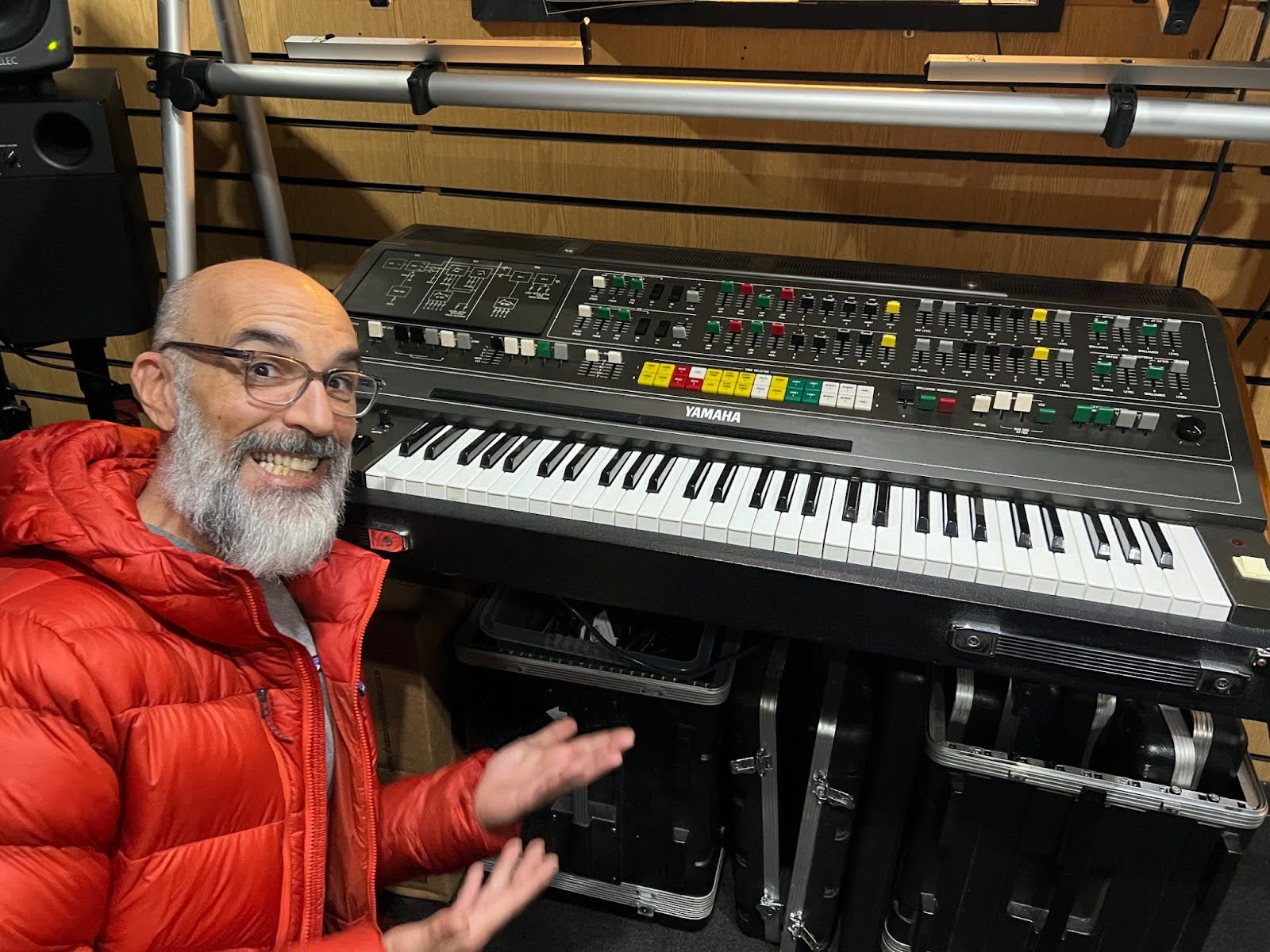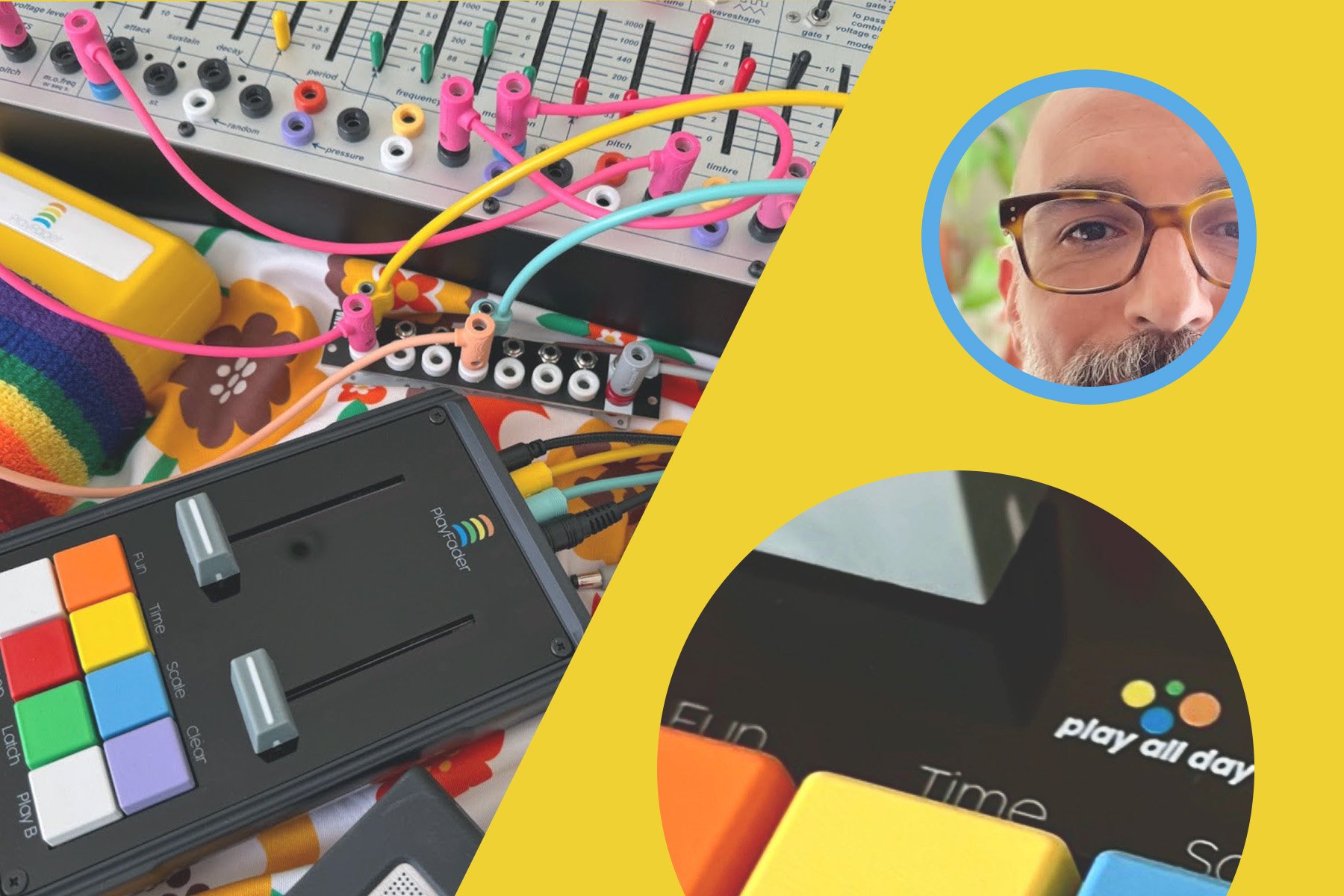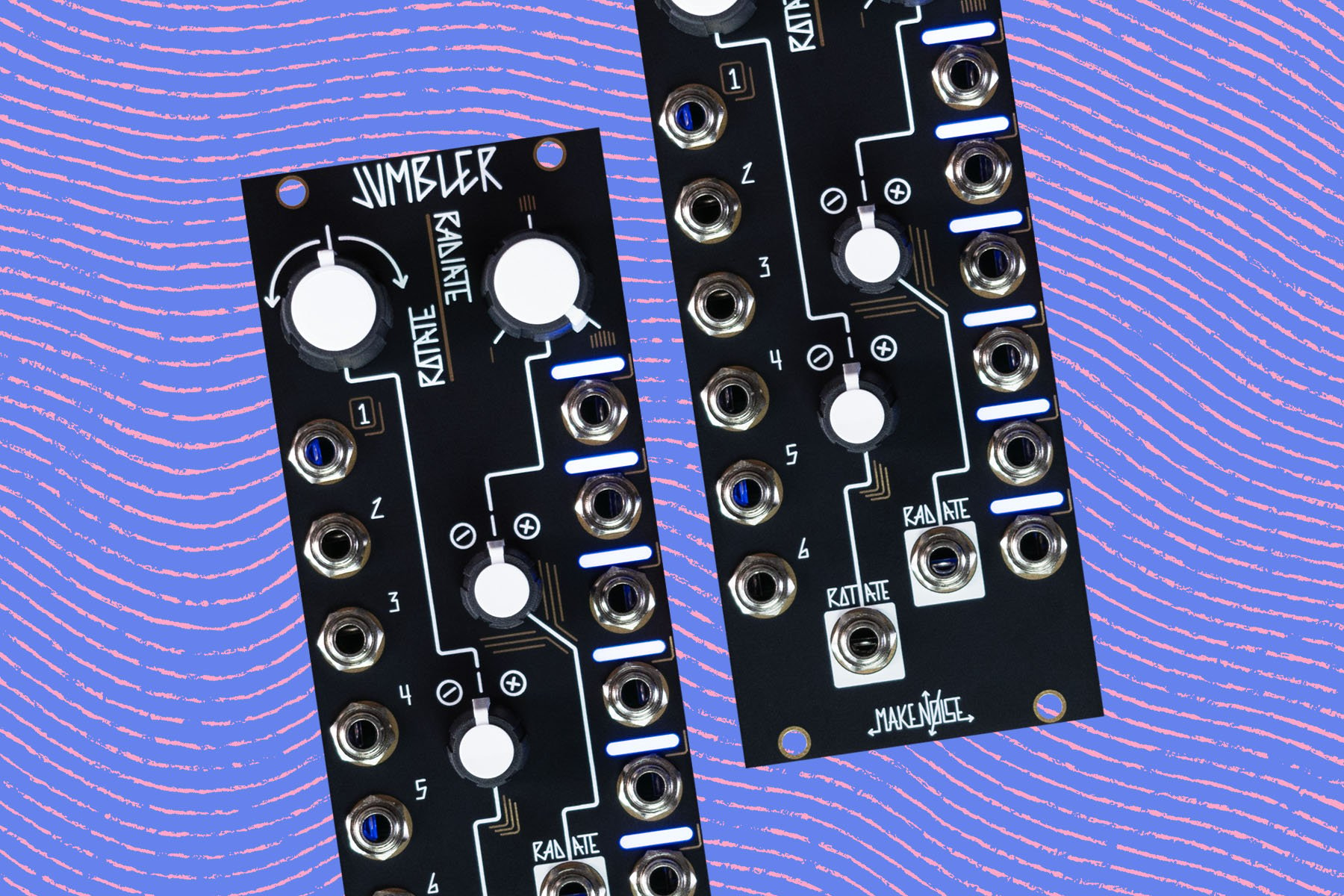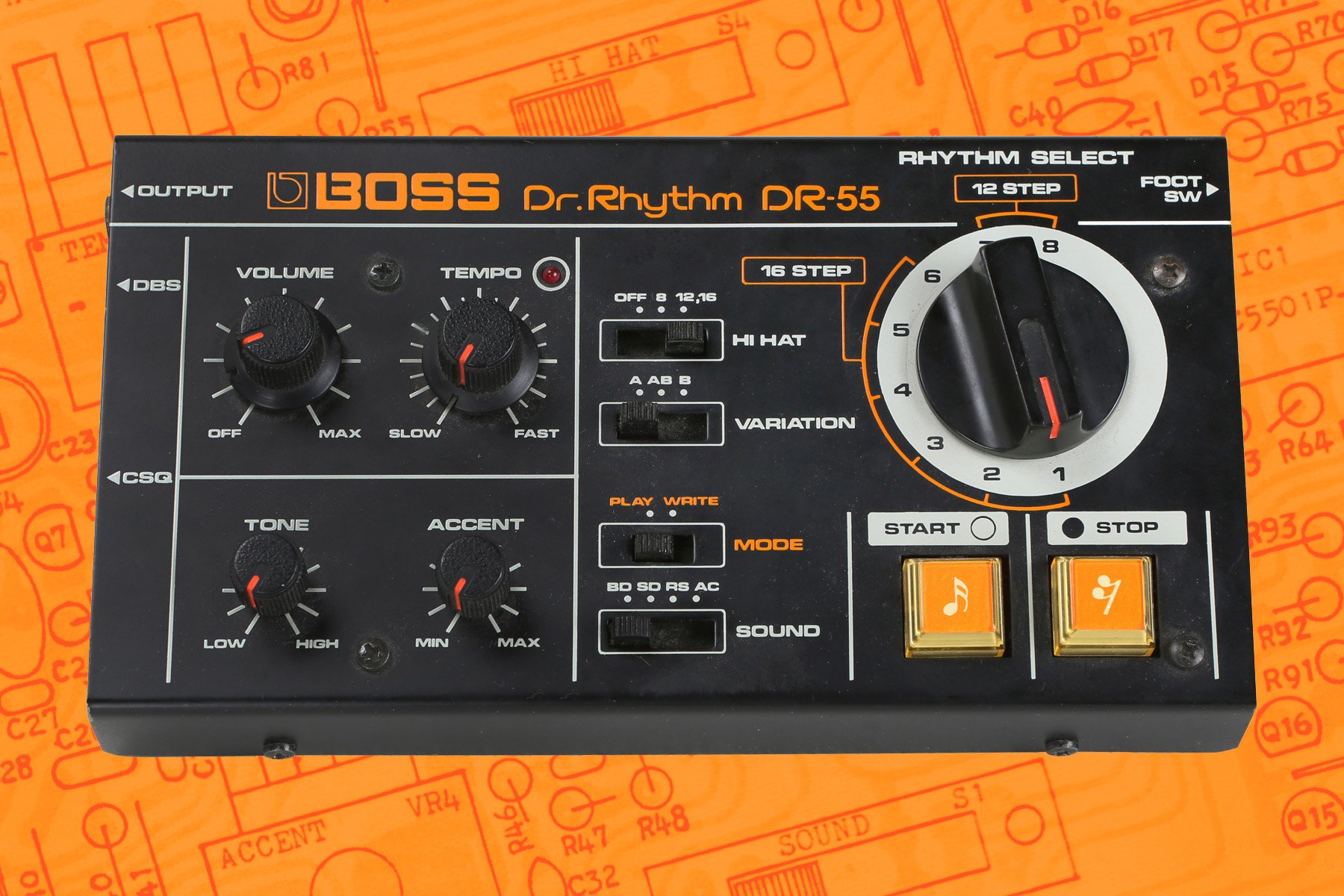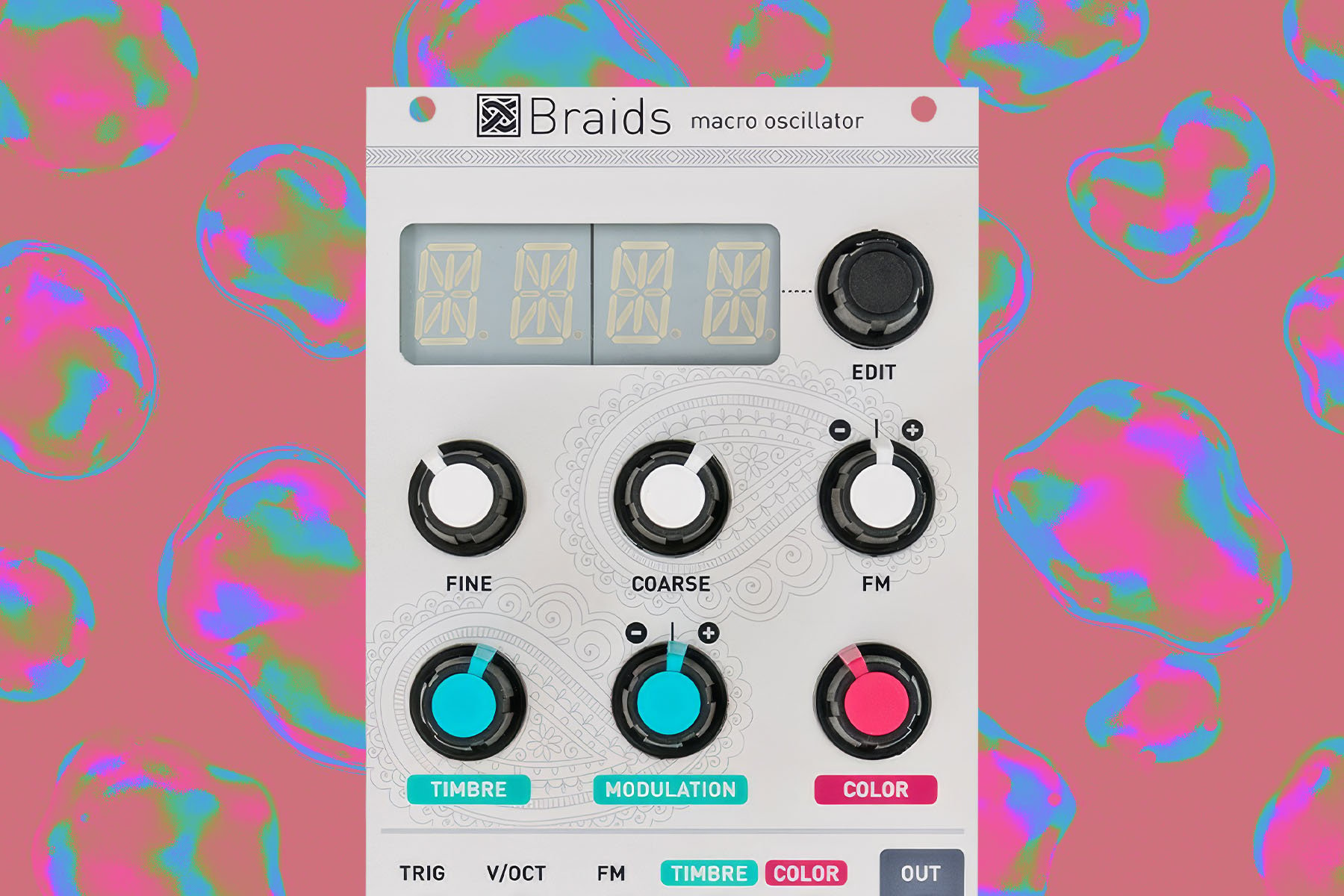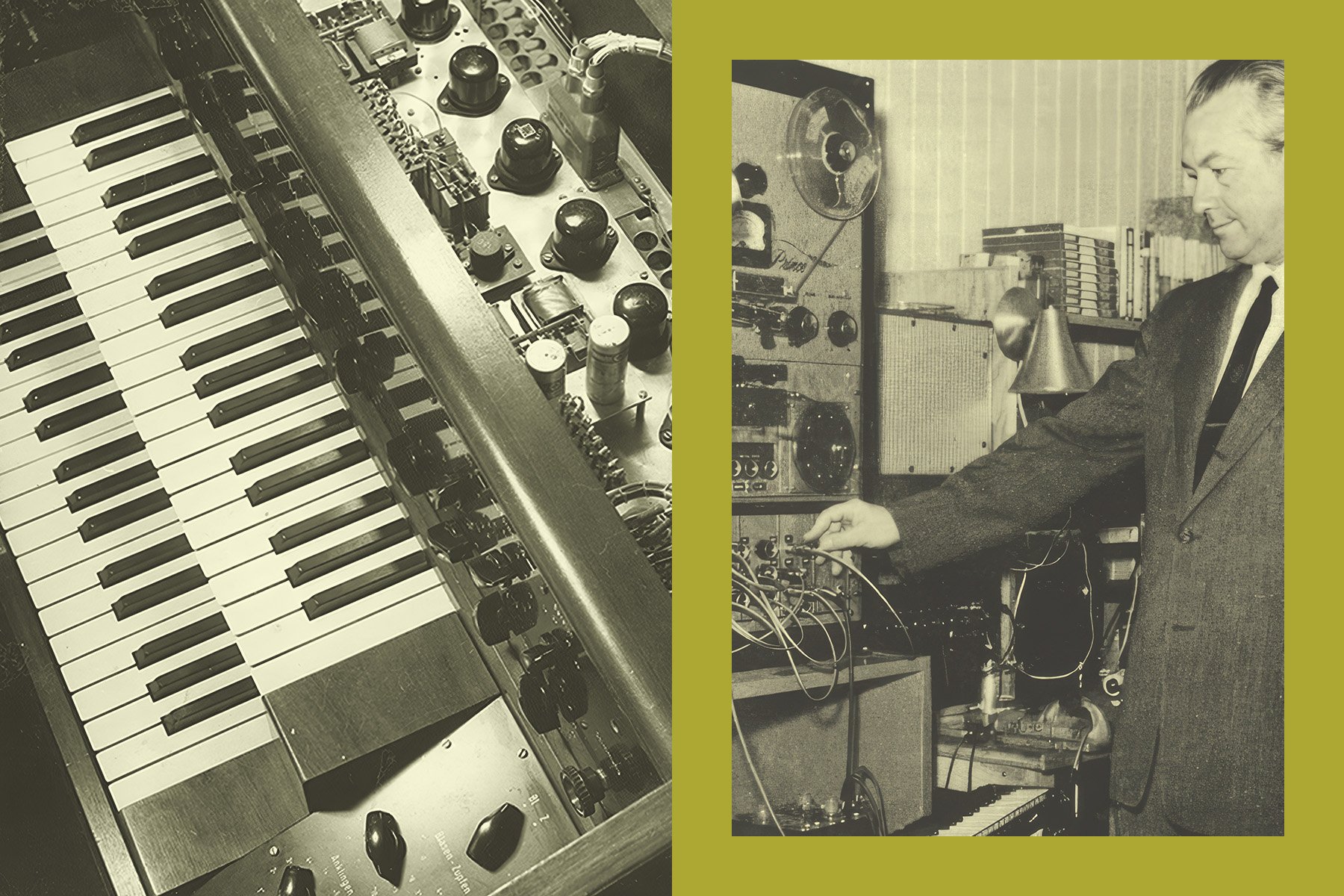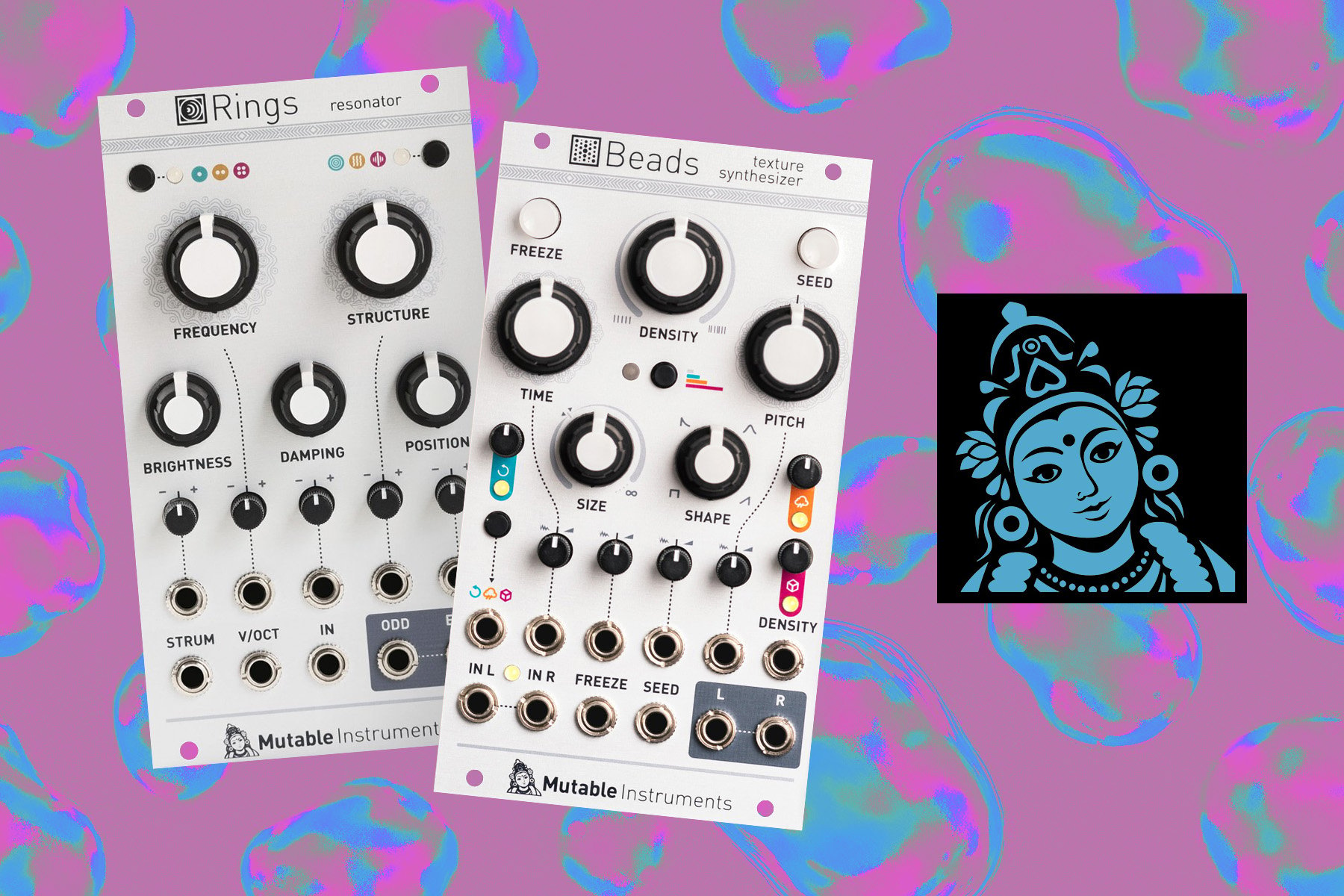Playing music is a lot of work - worthwhile work, assuredly - yet any musician with some years behind them will understand the subtle contradiction that underpins how we refer to the act of music making. "Play" is inherently creative - it evokes the uninhibited flow of childhood imagination, wherein we actively construct artificial worlds, assembled in blocks, acted out, or otherwise, in order to probe our world for possibility. This type of play is crucial to many musicians, but can easily fall by the wayside in lieu of exacting musical directives, complicated interfaces, and the desire to simply "get things right". In our own, tech-drenched corner of musical endeavor, the contradiction between musical work and play is perhaps even less subtle, as the many banal tasks of electronic music production tend to pile up like so many cars on a California highway - impeding flow and inviting rosy thoughts of doing almost anything else.
Far from our traffic-addled abodes here in Southern California, Andrew "Hadj" Hadjiantoni is working to help electronic musicians rekindle their spirit for play with PlayFader, an intuitive, fader-focused CV and MIDI controller. The first product from his Cypriot company Play All Day, PlayFader started as a collaboration between Hadj and Jason Hotchkiss of Sixty Four Pixels in Brighton, U.K. Setting out to craft a unique performance sequencer with unmistakably playful aesthetics, Play All Day has succeeded on all accounts, offering an intuitive interface that invites play at every turn. Despite its lighthearted look, PlayFader provides a surprisingly deep well of musical possibilities to be drawn out through iterative cycles of interaction, capable of complex control that never betrays its core sensibility for immediacy, improvisation, and fun.
With PlayFader having been out and about in the hands of musicians for a short time now, Play All Day is already cooking up new ways to inspire musical flow, with more colors of PlayFader's characterful enclosure and new devices on the horizon. Inspired by the fun of our own fader-mediated music making, we reached out to Hadj to learn more about what brought him to develop PlayFader. In our conversation, we touch on PlayFader's diverse inspirations, both musical and otherwise, as well as the importance of community in cultivating opportunities for creative play. Read the full interview below!
An Interview with Andrew Hadjiantoni
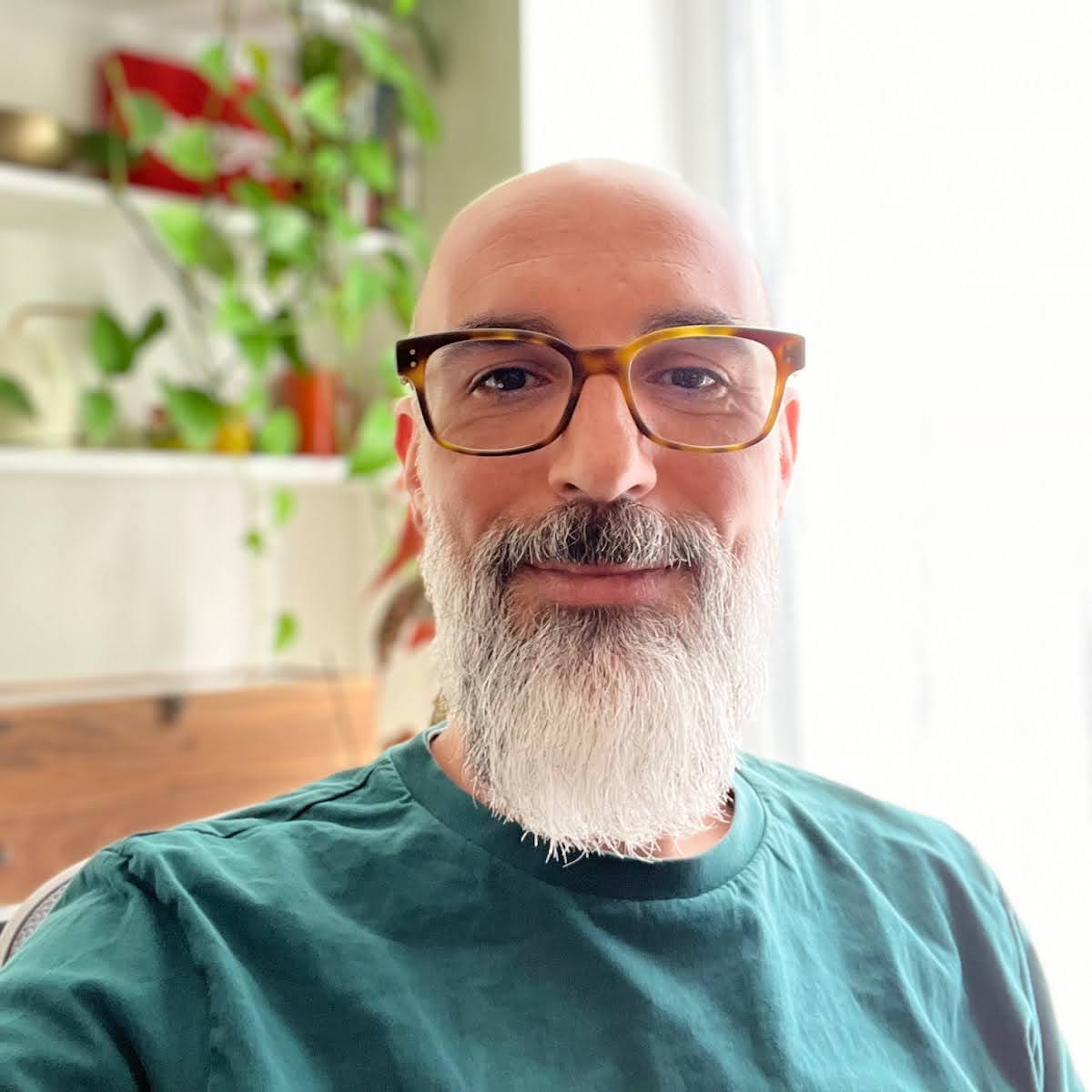
Perfect Circuit: The PlayFader just oozes fun, from its colorful plastic case, to the smash-friendly buttons, and of course the aptly named Fun button. Were there specific stylistic references from other objects - musical or otherwise - that you took inspiration from in your design?
Andrew “Hadj” Hadjiantoni: Thanks so much, the idea was definitely to design an interface that encouraged you to be expressive and ultimately put a smile on your face. I wanted to create something that looks and feels like a toy, something inviting and robust that you can play freely with, but with many hidden depths inside for those who let their imagination run wild. Toys inspire creativity, that’s what we all grew up with. The act of Play is essential to our wellbeing. PlayFader is a deeply complex musical tool that rewards play. It can be simple, and it can be many other things too.
It challenges what we’re taught about toys as we grow up, that they are not for adults anymore and we leave them behind. Well… maybe you don’t have to with PlayFader. Maybe you can keep enjoying and being inspired by toys. Especially when they offer the versatility and depth of PlayFader.
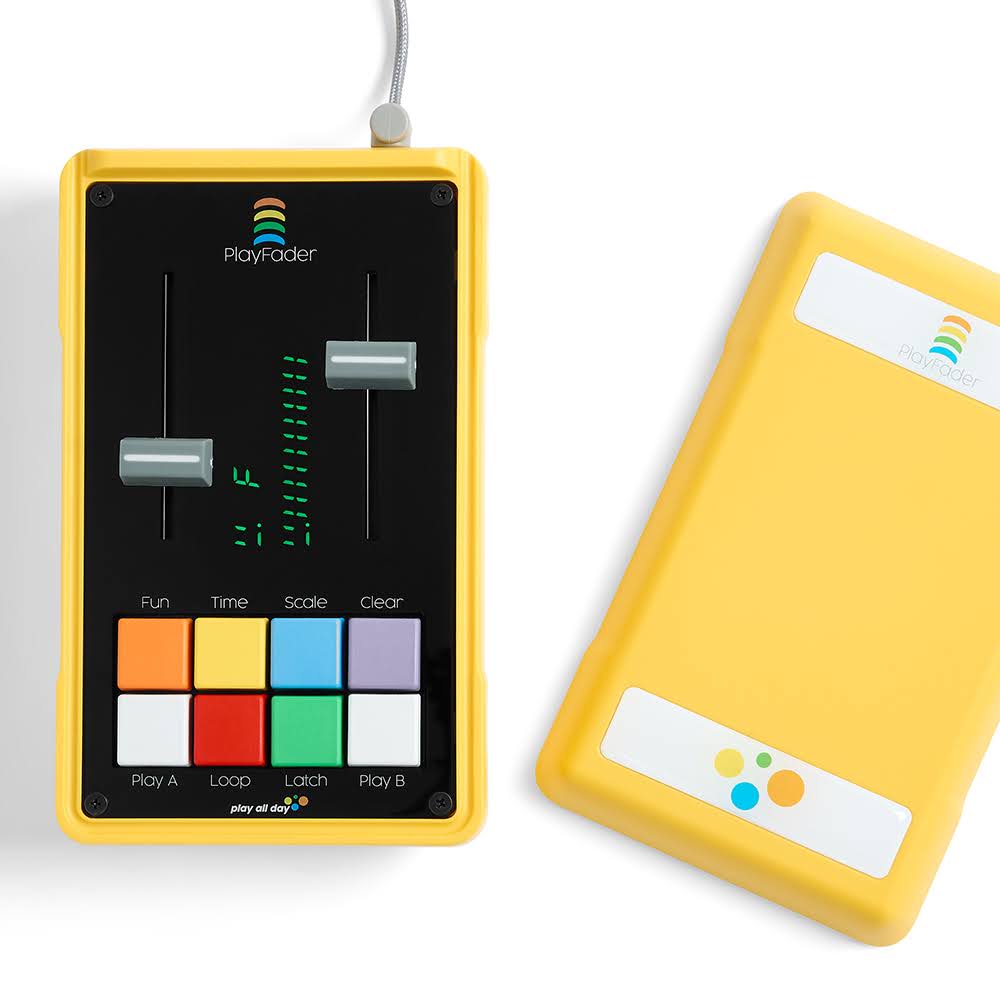
So often the act of making music can be anything but inspiring, with so many choices, options, undos etc. Take programming music for example. Working on individual steps is a norm, as is adding parameter locks and all manner of other painstaking details. Essentially it’s a slow laborious process on the whole and, while all those options undoubtedly produce unique results, they don’t necessarily make the process fun. It’s not like playing an instrument you know and love.
I wanted to design PlayFader as the antidote to that, bringing fun back into the process, but with enough depth of features that it could capably play alongside and even compete with the best sequencers out there. You can even play this in a band. I do. I’m a hopeless keyboard player but now I can play in a band with my friends, playing the heck out of my synths using my PlayFader. That’s my instrument. A fun and inviting device that talks to everything so you can just jump on and play anything, producing instant results that you were far less likely to have programmed. And with the depth to let you get incredibly creative in ways other sequencers really struggle to match.
Vlad from Soma said that musical instruments reward practice and perseverance. PlayFader does that with an interface that encourages quick dynamic gestures and even routines or special moves! We hope that this is something of a flow-sequencer.
Specific stylistic references are varied, from the obvious Speak & Spell and Simon Says games, to more obscure interfaces like Monome’s Grid. DJ mixers were also a big source of ideas, particularly for the placement of buttons.
I love the way the Buchla Easel used colours to connect faders with sockets, for me I always navigated around devices more visually and I was instantly in love with the Easel when I first got to play one. I knew I had to make colours an important part of the interface and associating colours with functions makes things more intuitive. So we had to make the FUN button orange. 😊

PC: I understand your experience as a DJ helped lead you to a certain affinity for the vertical fader and punch-in style button interface. What about this style of control did you find promising for use as a nontraditional sequencer?
AH: Yes I definitely like to play the upright faders and transform buttons on a dj mixer, but I was also fascinated by dub mixing. The way the fader is used as an intuitive and expressive control for levels, sends, feedback etc in both those approaches definitely confirmed my decision to build a sequencer based around a Fader.
Sweeping a fader up and down is more physically aligned with the way our hands work, as opposed to turning knobs. Particularly when you’re playing with more than one Fader. That’s also why we decided on two faders, side by side. Using them with both hands, buttons below them, it just felt like the best orientation of controls to allow players to flow around the interface.
What we did was essentially condense a piano keyboard into a Fader and Button. Twice. Moving up and down the fader is like going left to right on the piano and the best part is, when you want to hit a note, you don’t have to remember where the note is, you just press the Play button. The fader position and user scale takes care of the notes and staying on point.
PC: While unique sequencers and controllers are more common in the synthesizer world, it strikes me that PlayFader may be fun for DJs themselves, offering a familiar interface for jamming live along to their mixes that is much different than what we find on DDJ controllers and the like. Now that the PlayFader is out in the world, have you seen other DJ's start to catch on and perform with it?
AH: Yes, a DJ could absolutely use PlayFader in that way, creating all kinds of musical mayhem from dynamic tension to musical crescendos. With just a simple set up you can play a soft synth on your iphone, iPad or laptop via MIDI, or play a modular rack using CV, or do both at the same time. One on each channel of PlayFader perhaps. The main consideration is clock sync, which many DJs are now taking advantage of to bring new elements into their sets. Check out the Midi clock output from Traktor or Ableton, or the TE TX-6 mixer for its BPM detection and clock output.
Indeed, using Ableton you can use PlayFader as a live sequencer to easily add your touch to other productions in a DJ set. You can also use it in your own productions - jam on PlayFader and capture the output, edit to your hearts’ content. I’m still waiting to see someone truly embrace PlayFader into their live performance but I’m sure it won’t be long now.
PC: In addition to your globally-inspired work as a DJ, you also produce ambient music. Did that side of your musical practice also inform the development of PlayFader?
AH: Yes, this had a big influence in how we laid out the interface, particularly the button combos. I love synths, but I'm not a keyboard player. And I love counterpoint melodies that dance and move around each other. Early on in testing it became really clear to me that using both channels to play separate instruments was a huge source of fun and inspiration. Two hands on the two channels with the shared button controls created an incredibly engaging and rewarding interface. Suddenly the two channels made even more sense when playing ambient music.
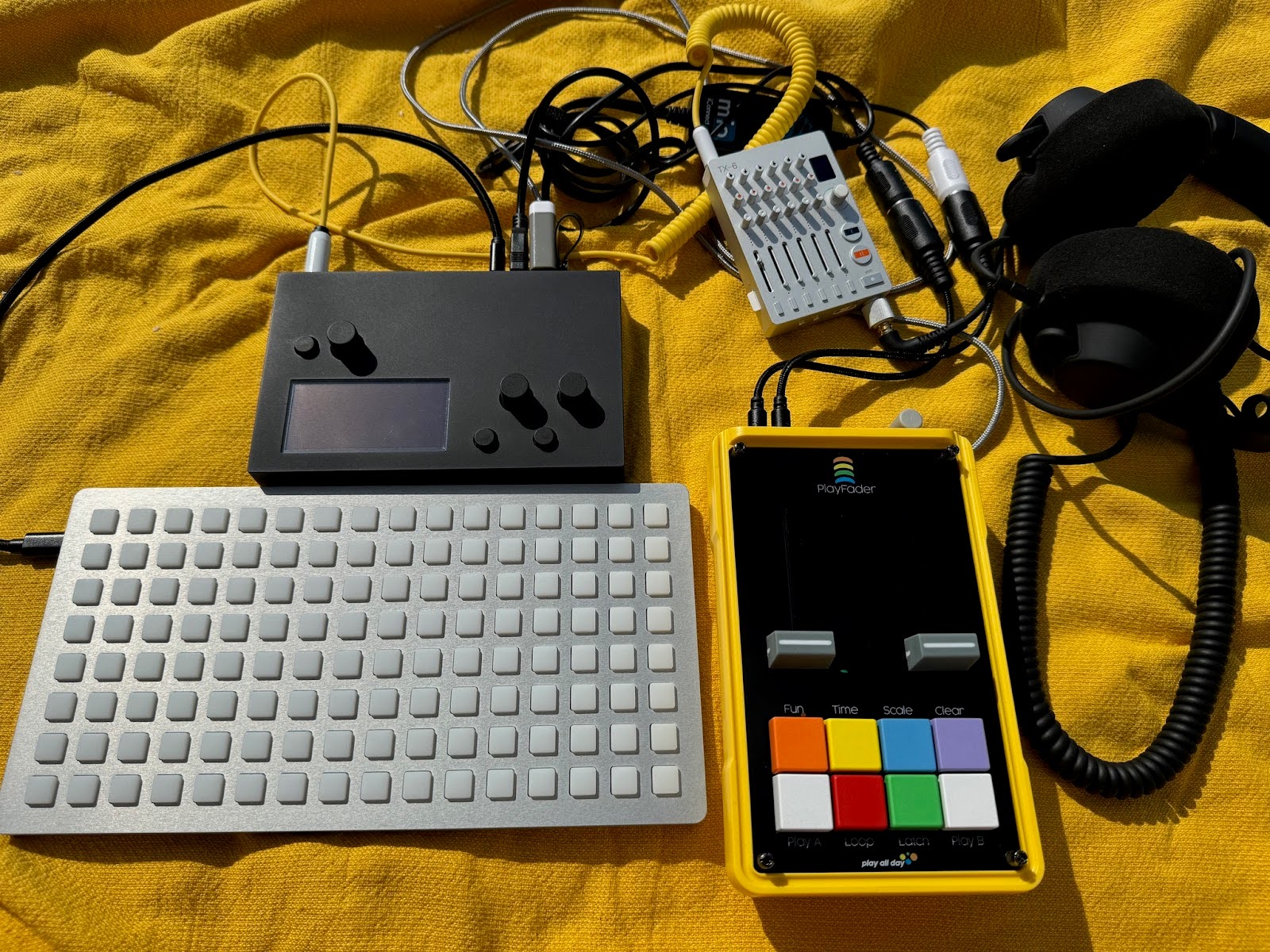
This encouraged us to design just enough cohesion between the two channels but also allow them to function independently. This allowed for a wonderful new way for me to perform ambient music. Without a sequencer I can now perform ambient soundscapes and pieces with just PlayFader. I often like to take copies of the CV signals and send them to all kinds of other destinations too, creating a pseudo symbiosis of melody and modulation. You really can play like this for hours, two voices counter playing based around and driven by your live input.
PC: In using the PlayFader, I found myself very aware of the unique physical possibilities for triggering and affecting sounds that the interface provided. I couldn't help but start developing my own collection of gestural ideas to practice and perfect. Are there any gestures you've found particularly effective or special within PlayFader, either in your own musical work or from other musicians?
AH: So interesting that you say that, because the first couple of months of using PlayFader in the early development stages, I definitely felt that I was just using a small number of gestures. Mostly sweeping up and down. When I started to think about it, I realised there were lots of different gestures that could produce some really unique results. There are so many ways of using the interaction of fader and button when you start to build patterns up using the different Time quantisation options.
Using Single CV mode with a modular can give you great little micro sweeps and pitch bends, using Auto mode creates more stepped pitch progressions and ratchets. Sweeping the fader in both modes while holding the PlayButton down will give very different results for modulation too. This is because of the way CV is sampled to the Time division setting as it’s being moved. This is where things can get deep, complex and creative for those that want to. PlayFader is capable of drawing highly complex modulation curves and patterns.
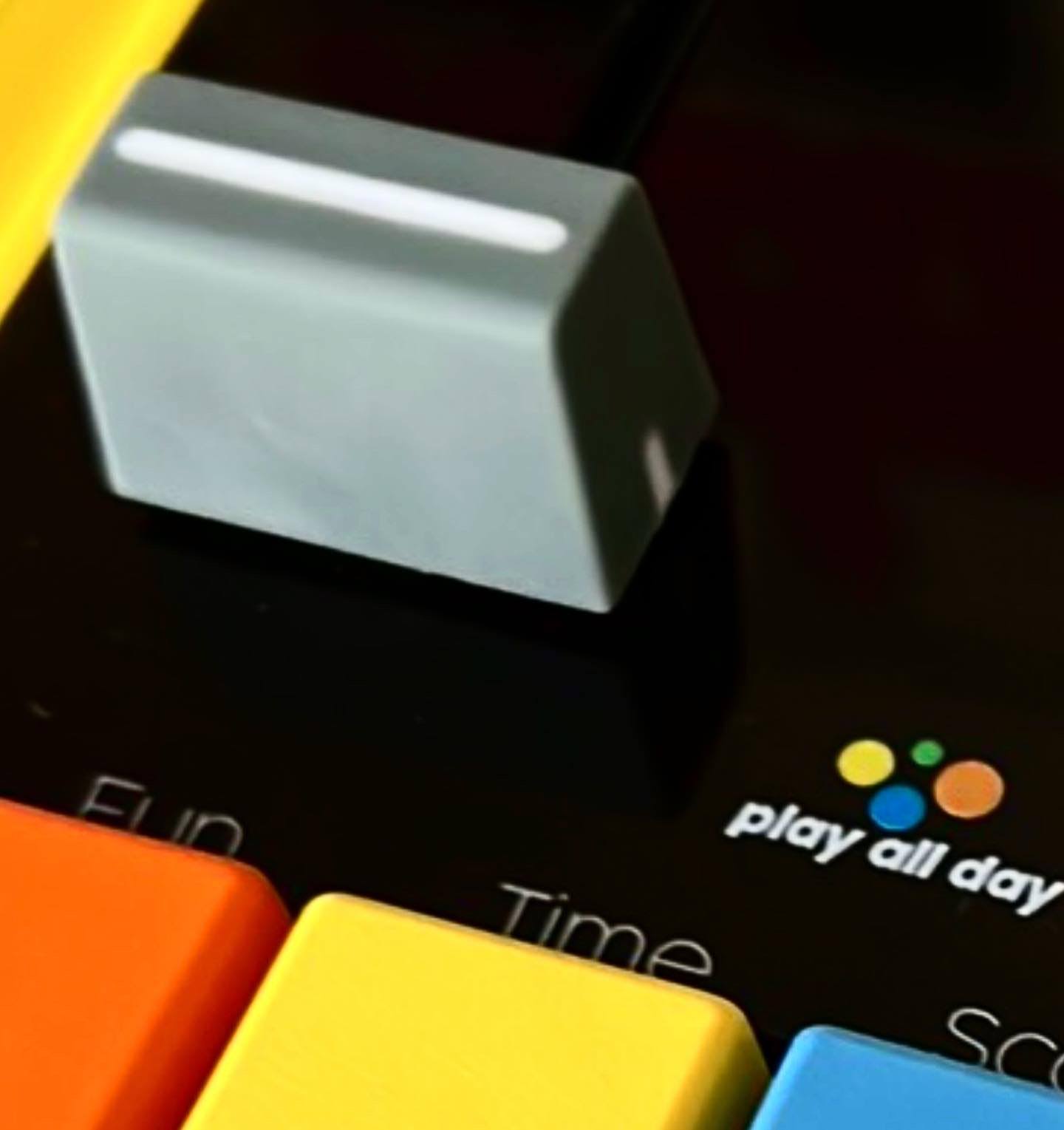
PC: In both the desktop controller and Eurorack worlds, we've seen a few takes on the motion recorder concept, things like the classic Korg Electribes, modules from makers like SoundMachines and Bastl, and of course Elektron's parameter locking brilliance. PlayFader has some resonance with these tools, but takes a unique approach with the punch-in triggering and overdubable "Fun FX". Did you have specific motion recorders in mind when developing the PlayFader?
AH: The Fun FX are all about jamming over your patterns and took inspiration from things like DJ software fx like beat roll, beat jump etc. We also loved the TE pocket operator punch FX so we wanted that level of immediacy too. However we didn’t believe it should have been recorded then anyway.
PC: You started Brighton Modular Sessions in Brighton, UK, which led you to the collaboration that would ultimately become PlayFader. From your personal perspective, what was Brighton Modular Meet?
AH: BMS was kind of the start of it all really because that’s where I met so many people who have helped me get to this point. Because it's based around live improvised performance, it really did inspire me to start thinking about a device or sequencer that I could perform with. But I actually met Jason separately before that.
PC: Let's talk a bit about the collaboration with Jason Hotchkiss, who designed most of what's under the hood in PlayFader, and is also responsible for other fantastic tools in the broader "interesting MIDI" world. How did you meet Jason?
AH: I first bought a CV OCD from Jason and called round to collect it as we were both in Brighton. We got talking from there and over the next couple of years began to refine an idea and then decided to go for it. It was really clear that Jason had some great experience, from the sequencing work he had recently done with Noodlebox to the other MIDI and CV boxes he’s famous for. As we talked about the device and the interface challenges, the Midi side of his experience really began to shine though.
PC: From interviews you've given elsewhere, I understand PlayFader wasn't the first or only idea you had brought up to Jason. What were some of those early discussions like?
AH: So originally it was going to be a single channel module, but even before that we were discussing an Euclidean sequencer based around arcade buttons, not faders. We had lots of brilliant discussions and explorations trying to figure out the best way to lay out buttons, the quality of faders, etc. But we realised quite soon that we wanted longer faders, and more room to play. Getting it out of the rack was the best move really. It opened up a world of more options and gave us the really versatile controller it is today.
PC: In the "About Us" section on PlayAllDay's website, I learned you were raised in Cyprus, and currently run the company's operations and manufacturing there, doing more to help put your homeland "on the map". Between this sentiment and your work in Brighton's synth community, it strikes me that a commitment to place and community are major inspirations for you. Are there specific aspects or experiences from those communities that have informed your work with PlayAllDay, or with music more broadly?
AH: Yes - be kind, collaborate, make friends, fuck war, share food, give love, make music and play all day…
I am incredibly proud to be running Play All Day in Cyprus and committed to furthering opportunities for people to have easy access to electronic music equipment, education and community there. We have some nice plans for the future.
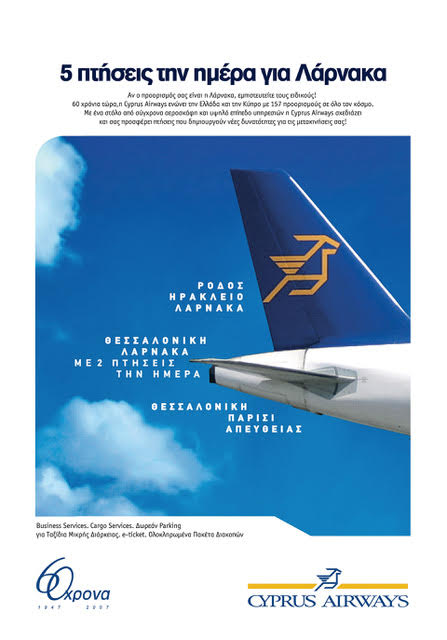 Designs for Cyprus National Airlines and the Cyprus national flag inspired PlayFader's bright yellow aesthetic.
Designs for Cyprus National Airlines and the Cyprus national flag inspired PlayFader's bright yellow aesthetic.
Something struck me that I can’t believe I forgot regarding design influences. It's quite personal because it’s essentially all from the national flag of Cyprus and its old national airline logo. My dad used to work for them so I grew up with the logo everywhere and with the flag too, I realised that yellow has always been abundantly visually present in my life, not to mention the lemons, sunshine and golden sand beaches we’re famous for.
PC: When PlayFader started to take shape, what led to the moment of realization that turned it from a very cool idea to a full-fledged consumer product in your mind? I imagine there's some sort of lightbulb moment where it suddenly becomes clear, but maybe it was more gradual?
AH: The moment happened when I first played a prototype. I could tell straight away that this was much more rewarding and expressive than anything I’d tried before. I remember being so excited, it was amazing. Then came Covid though and things slowed down for a while thanks to parts shortages etc. But I still had my prototype PlayFader to play and it kept me going throughout the pandemic… I knew we had to build this thing!
PC: I understand that PlayFader's recycled plastic enclosure isn't just a stylistic choice, but was informed by your commitment to sustainability. What sort of obstacles are there for developing an electronic product with the Earth in mind, and how have you approached those challenges with PlayFader?
[Above: Scenes from Play All Day's Cyprus-based production facility]
AH: Without a doubt, that was much harder than I expected. I was so surprised to see how little effort there was in the industry beyond packaging. One person I spoke to who worked with many small makers in the Eurorack world said that all the quantities were so small, it wouldn’t make a difference anyway… so not many bothered. That annoyed me so I decided there and then that no matter how small the impact, it had to be worth it.
So we thought out of the box a bit too. As well as committing to firmware updates rather than V2 hardware, we also want to build alternate firmwares using the interface in new ways. Getting more out of a single device and it lasting for as long as possible is really important for us. The enclosure design was where we were able to make the most impact, and not just in material choice. For example, it’s designed to work for other future products (see below :) ), and there is no clasp or hinge to snap, avoiding the potential for broken plastic and useless cases.
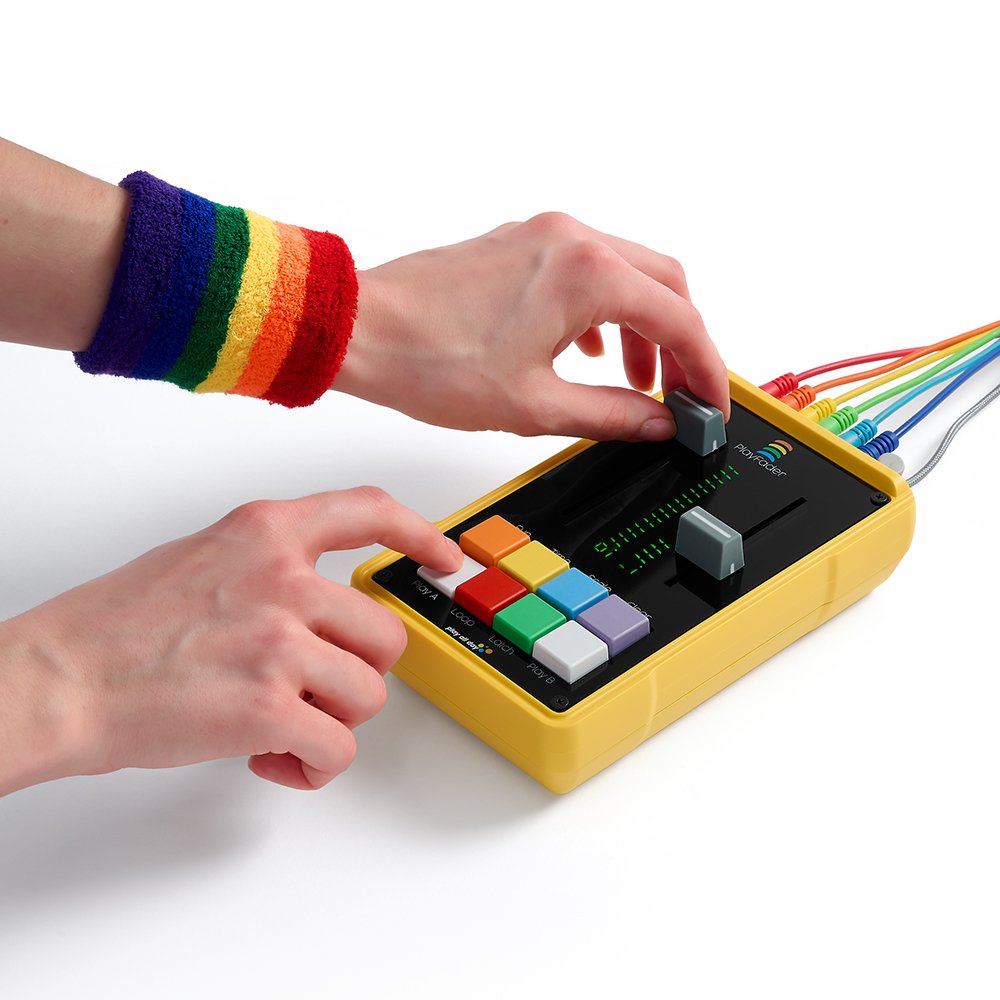
Materials were a bit more straightforward. I could have made a folded steel enclosure with a PCB panel, but there was no pathway with either of those materials to be sustainable. So I found a place for the case that collects recycled ABS plastic and is available in small batches in pure colour (very rare). For the acrylic panels on the top and bottom of the device, I chose a material that we can transition to recycled once we hit a certain volume of orders.
PC: In addition to your environmental commitments, PlayFader ships with a dashing rainbow wristband (which is also useful for holding the frame and lid together during transport) that supports Stonewall U.K., an advocacy group working to improve public policy and public perception in support of the U.K.'s LGBT+ community. Other than the obvious aesthetic resonance between the colorful PlayFader and wristband, how did this particular expression of PlayAllDay's social commitments come about?
AH: Community equality is really important to me, and so is keeping the lid on :) Actually the wristband prolongs the life of the plastic case. By using the wristband, we solved the issue of how the base and lid would clasp. We really didn’t want a plastic clip on the edge, these always break and would make the case useless and destined for landfill. Using a wristband was a perfect long-term solution. Plus being from Brighton, we knew all about these gorgeously bright things and loved the idea of sending hundreds more out into the world xx And it keeps awareness levels high 💛
PC: On PlayAllDay's website, you also hint at some upcoming collaborations "across the troubled border lines with other synth engineers in Northern Cyprus". Before we go, can you give us any more hints at these upcoming projects?
AH: Yes, I’m working on our 2nd product with the wonderful Atesh from Guru Gara Synth! 😎 It’s a two voice analog synth that will fit in the same case as PlayFader.
The premise is based around the division on the island since 1974 and seeks to show optimism through synthesis. The voices represent the two halves of the island, the two cultures in conversation over 50 years, illustrating in sonic terms the dissonance, harmony, and optimism for the future through carefully chosen controls and circuit design. We’re so excited about the next chapter of the PlayFader ecosystem.
